Pumpkin Plant Life Cycle
Pumpkin plants are a blessing in my garden. Growing pumpkin in my garden is surprisingly easy and fruitful, providing a fun and educational activity. They can be grown in any size in which I wanted to grow them. So they are interesting to grow and provide cute looking round orange pumpkins on the vine in the garden. Understanding the life cycle of pumpkin helps to enhance my pumpkin growing success. So let’s begin our journey towards growing pumpkin through its various growth stages.
Pumpkins (Cucurbita maxima) is a curious vegetable. In some arable areas it is treated and grown for the kitchen while in other areas it is planted for fun, to see who can grow the biggest one or it is grown to be carved into scary faces for halloween. It is an amazing vegetable for culinary as well as decorative purposes.
Pumpkin originated from South America, where it has been used as staple food and in North America too pumpkin is widely used. Various varieties of pumpkins are grown such as Atlantic Giant, Crown Prince, Jackpot, Spirit, Tom Fox.
These pumpkins have various health benefits and nutritive importance. Moreover this widely cultivated vegetable also marks its religious and cultural importance worldwide.
Importance and Health Benefits of Pumpkin Plants
Pumpkin is a widely grown vegetable as well as staple food in some parts of America with its various nutritious benefits, listed as:
- Pumpkins are packed with various essential vitamins and minerals such as
- Vitamin-A in pumpkins is important for healthy vision and better immune system.
- Pumpkin contains a generous amount of potassium that helps to regulate blood pressure and promotes heart health.
- Pumpkin aids the digestion process as it is full of fiber content.
- Antioxidants in pumpkins reduce free radicals, thus it also helps to reduce the risk of heart diseases and cancer.
- Pumpkins enhance natural beauty. Antioxidants and vitamin-A in pumpkins promote healthy skin, ultimately enhancing the beauty of their consumer.
- It is a sustainable crop, as its seed can be roasted and eaten. The flesh can be consumed in various delicacies and rotten fruit can be composted and used for enriching soil for planting.
- Pumpkins are incredibly versatile, used in sweet and savory dishes. Pumpkin pies, stews, breads and soups are greatly important adding unique colors and flavors to meals.
- Other festive importance of pumpkins involves their use in crafting scary faces for halloween events, and competition of growing the largest pumpkin also takes place. These pumpkins are large enough to surpass human size.
For more information about Kitchen Garden you can visit: Companion Plants For Mustard Green
Growing Pumpkin Plants
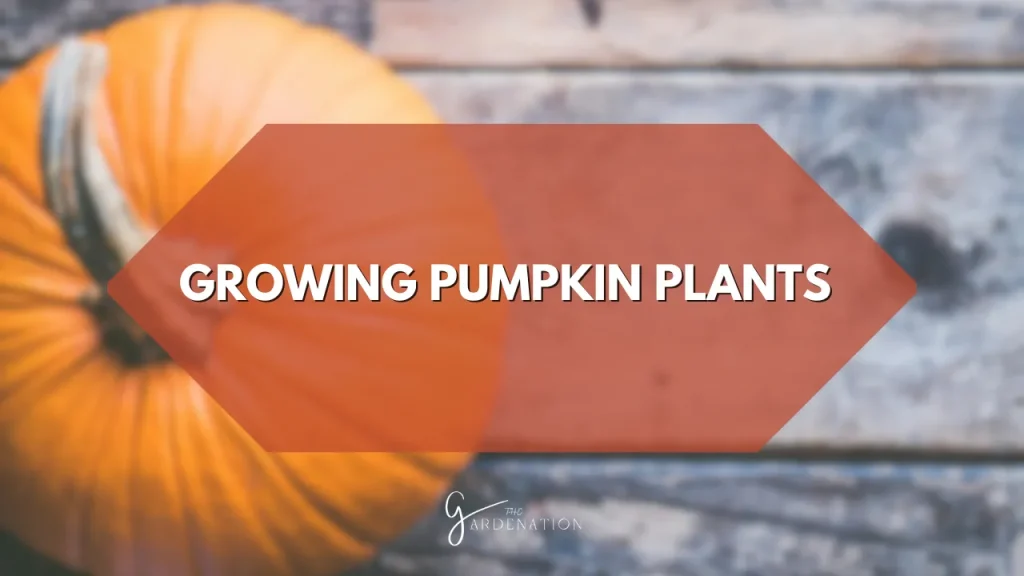
Pumpkins are grown as vines and are good ground covers. Pumpkins seed a sunny site that is open and protected from strong winds. The soil must be well drained, rich in organic matter and loamy that has good water holding capacity. At each site dig a 45cm pit and fill it with manure to replace topsoil for best soil health.
Germination process must be started in the late spring in a controlled environment. This phase doesn’t need high temperatures. Pumpkin plants prefer temperatures ranging from 21-29℃ during the day with regular watering and proper sunlight for their best growth.
Seed Sowing
Get the best quality, healthy seeds of pumpkins. Like other kitchen crops pumpkin seeds must also be grown in a controlled environment until it is strong enough to tolerate harshness of the outer world. Before sowing the seeds they must be soaked to soften the seeds and then sown in good quality mulch. The detailed procedure for germinating pumpkin seed is as follows.
- First after getting the best quality treated seeds, soak them in hot water for 2-4 hours to help soften the seed coat. This will speed up the germination process.
- Take seedling trays and fill them with fine quality mulch or soil. Moisten the media but don’t overwater.
- Sow the pumpkin seeds 3-4 in each section to 1-2 inch depth.
- Cover the tray with a plastic sheet in order to maintain humidity and warm temperatures.
- Place the tray in a warm place at 21-29℃. Sunlight at this stage is not essential.
After sowing the seeds, regularly check the soil for moisture and if it dries out, water it but avoid overwatering at any stage. The cultivar was covered with a plastic sheet but it must be lifted daily for a few minutes to allow some air circulation.
After 7-10 days first germination would be seen, when the first sprout is seen remove the plastic cover and place the seedling in bright, indirect sunlight. After complete germination of seedling, pick the finest one and prepare it to transplant in the garden.
Seasonal Varieties of Pumpkin Plants
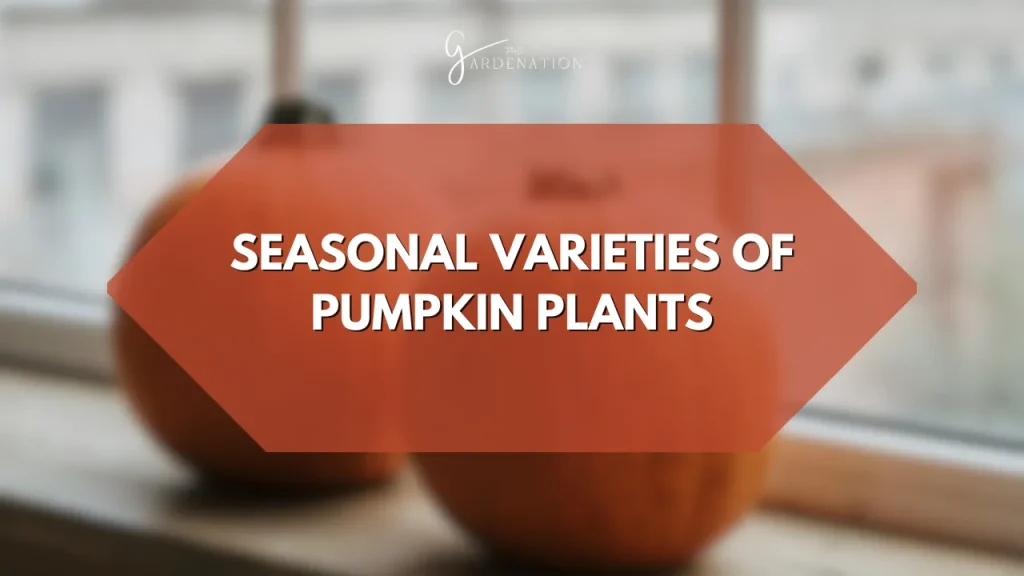
According to growing season pumpkin plants are classified as,
- Early Season Variety
- Mid-Season Variety
- Late Season Variety
- Early Season Variety
These varieties are ideal for growing season or areas with colder climates. They have the ability to mature quickly allowing for earlier harvest. These varieties produce good yield but less than the actual yield that should be seen. Time period taken for their growth is 70-90 days.
Examples: Jack be little, Bush baby, Sun gold are some popular early seasonal varieties.
- Mid Season Variety
Mid seasonal pumpkins are the most popular with a wide range of varieties. These varieties provide a good balance between maturity and harvest with the production of maximum yield. Number of days taken for their growth are between 90-100.
Examples: Howden, Sugar pie are popular mid seasonal varieties.
- Late Season Variety
These varieties take a longer period for their growth (100-120 days) and require a warmer climate. These varieties are generally larger and produce higher yields.
Examples: Atlantic Giant, Big Max and Baby Palm are few examples of late seasonal pumpkin varieties.
Selecting the right variety based on the growing season is important for ensuring the successful pumpkin cultivation. Based on the purpose of growing pumpkin different seasonal varieties can be selected. Here are some of the varieties of Pumpkins: 13 Varieties Of Black Pumpkins
Growth Stages
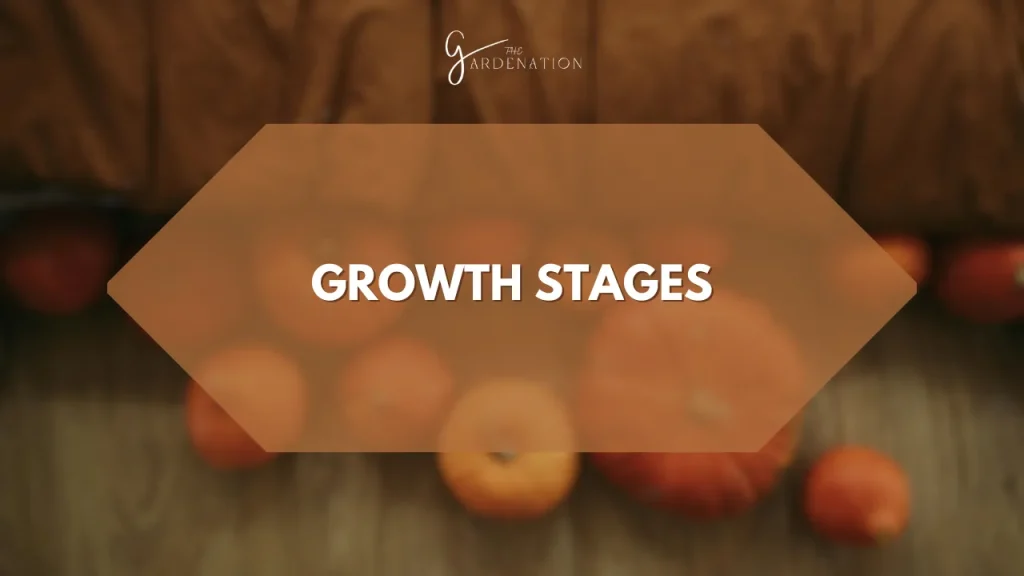
On average 85-120 days a pumpkin plant takes to grow. However in general they go through 7 distinct growth phases in their life.
| Growth Stage | Favorable Period | Approximate Time |
| Germination | Early Spring | 7-10 days |
| Seedling Stage | Mid-Spring | 1-2 weeks |
| Vegetative Growth | Late Spring- Early Summer | 3-6 weeks |
| Flowering | Mid-Summer | 1-2 weeks |
| Pollination and Fruit Set | Mid-Summer | 1-2 weeks |
| Fruit Development | Late Summer- Early Fall | 45-55 days |
| Maturation and Harvest | Fall | 100-120 days |
The growth period can vary depending upon the variety of cultivar and provided conditions. However, these are the approximate timings when optimum conditions and season is provided.
Germination Phase
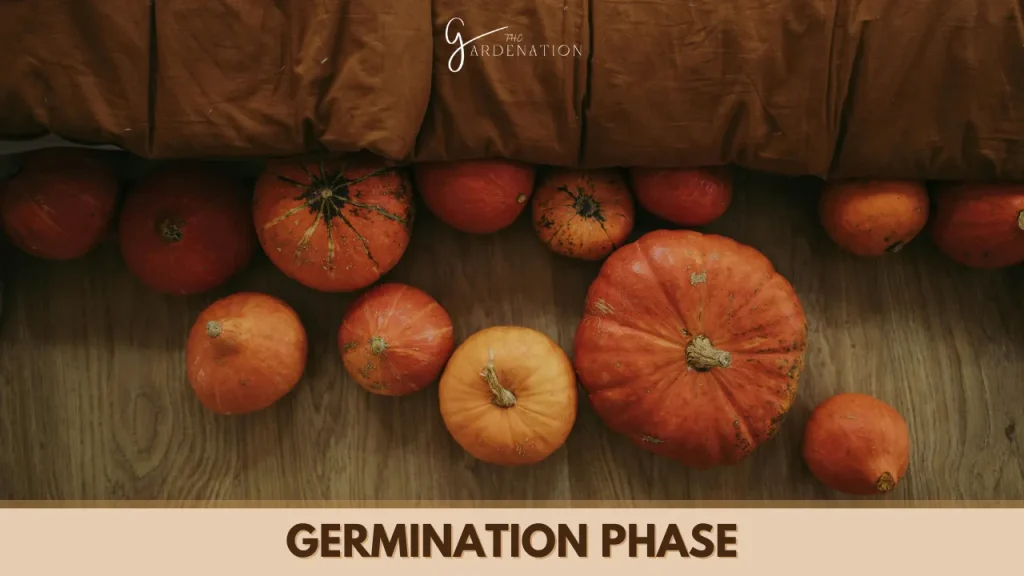
The first step of growth in a pumpkin plant is the germination of the seed. The detailed guide about the seed germination process is described above. However this process needs care and extremely favorable conditions. Warm temperature of 21-29℃ is required. The growth medium must be kept moist but not soggy and for 7-10 days germination will continue.
This phase is of no visible growth above the surface of soil. Proper care and conditions must be provided to the plant during this phase as care taken during this phase will result in healthy seedling that is the determining factor for the growth in upcoming phases.
Seedling Phase
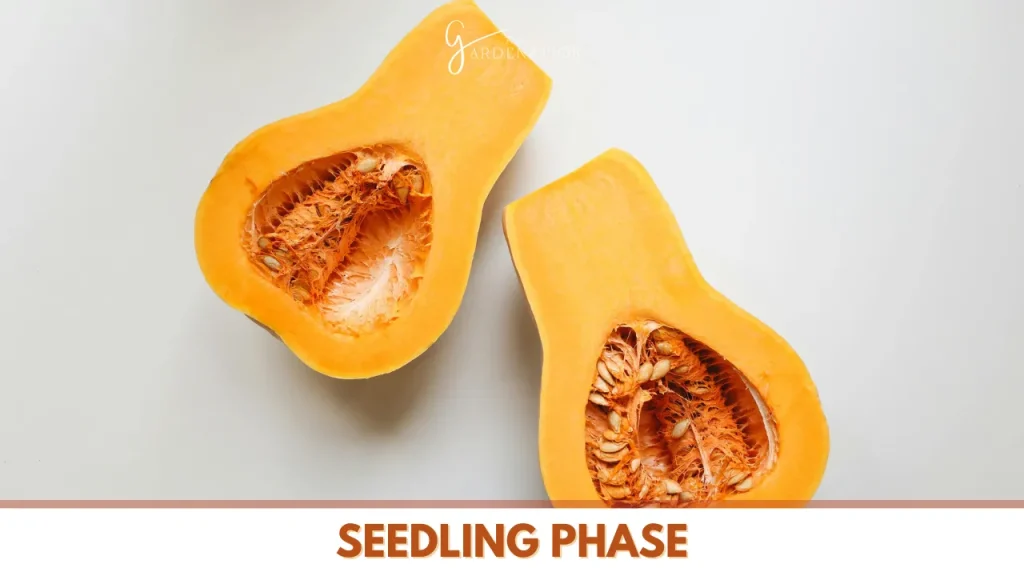
After 7-10 days delicate seedlings will sprout out of the soil. Small seedlings with cotyledons on them will appear at this phase, seedlings are very weak and sensitive so they need care for better growth.
- During this phase keep the soil evenly moist but avoid over watering.
- After a few days seedling will have few sets of true leaves. At this stage start feeding low conc. fertilizers to the seedling.
- Once the frost has passed out and favorable conditions appear with 4-6 true leaves on seedling. Transplant the seedling in the garden in well drained fertile soil at a sunny location. The seedling phase continues for 1-2 weeks under warm and indirect sunlight during mid spring.
- Proper spacing must be followed during transplanting pumpkin as they will grow into spacious vines.
Vine Growth
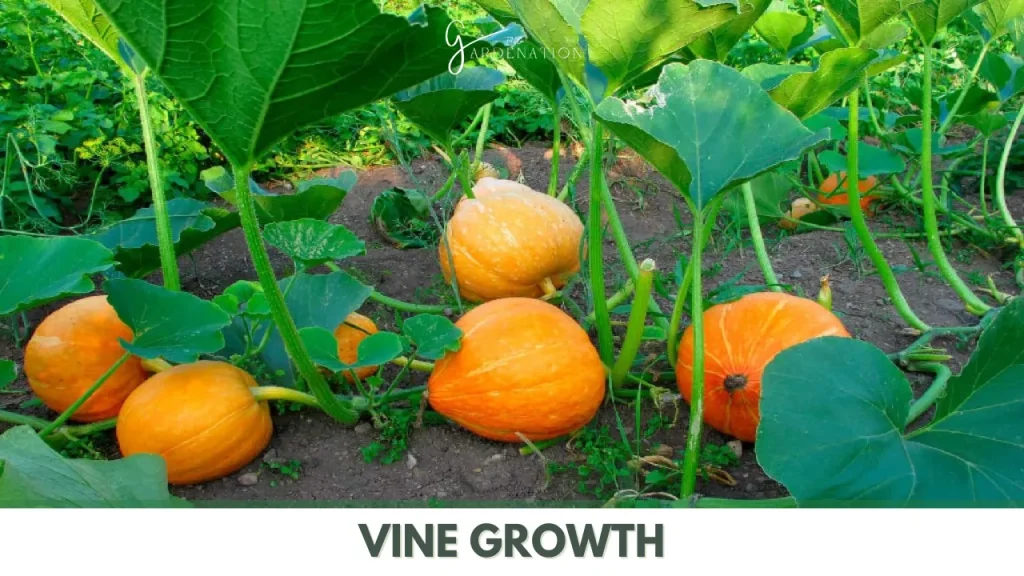
Now the pumpkin plant is exposed to the real world. It will adapt to its surroundings and make itself stronger. The plant will start its vegetative growth and establish a strong network of vines to support later reproductive phase.
- During this phase the plant prefers warm temperatures with sunny hours (6-8 hrs), well drained and fertile soil.
- Sunlight is important for strong production and growth and favorable period is late spring- early summer
The vegetative growth takes 3-6 weeks for the plant to reach its mature stage. Provision of nutrients and water is equally as important as sunlight.
Flowering
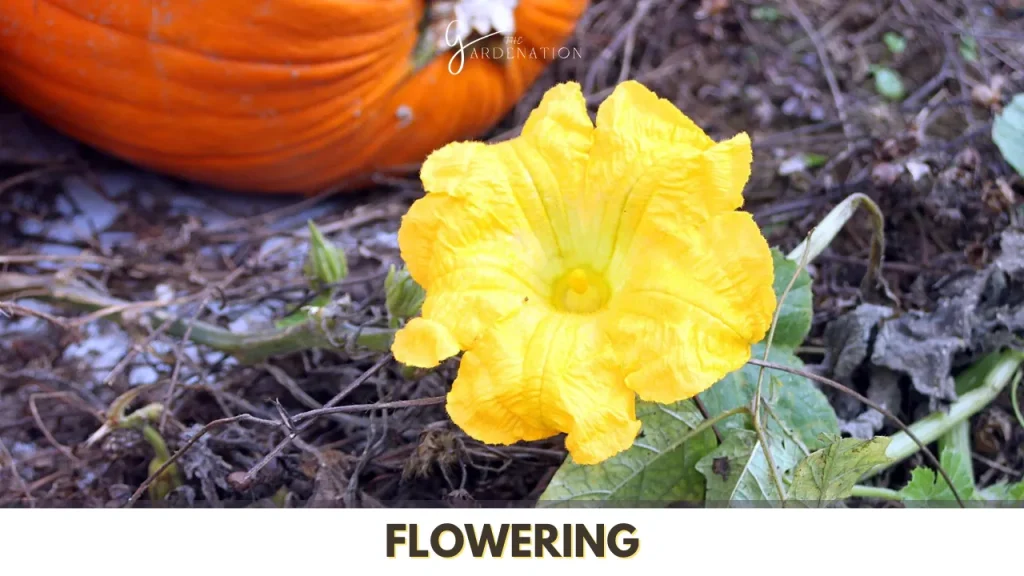
Within 1-2 weeks after vegetative growth the vines will bloom with vibrant yellow flowers. In pumpkin plants there are separate male and female flowers:
- Male Flowers- Male flowers appear prior to female ones. They have long, slender stems and lack a swollen base. On male flowers pollen is produced to fertilize the female flowers.
- Female Flowers- Female females appear few days later, they have wider base containing ovary that will later develop into ovule and fruit after fertilization
These flowers are easy to recognize as female flowers have swollen bases and male are long and slender. Warm temperatures are favorable during the flowering phase as it will encourage pollinators. These flowers stay in the garden for a shorter period so encouraging better pollination during this short phase is key towards best growth. We have Also discussed Broccoli Plant Growing Stages. Do Checkout!!
Pollination and Fruit Set
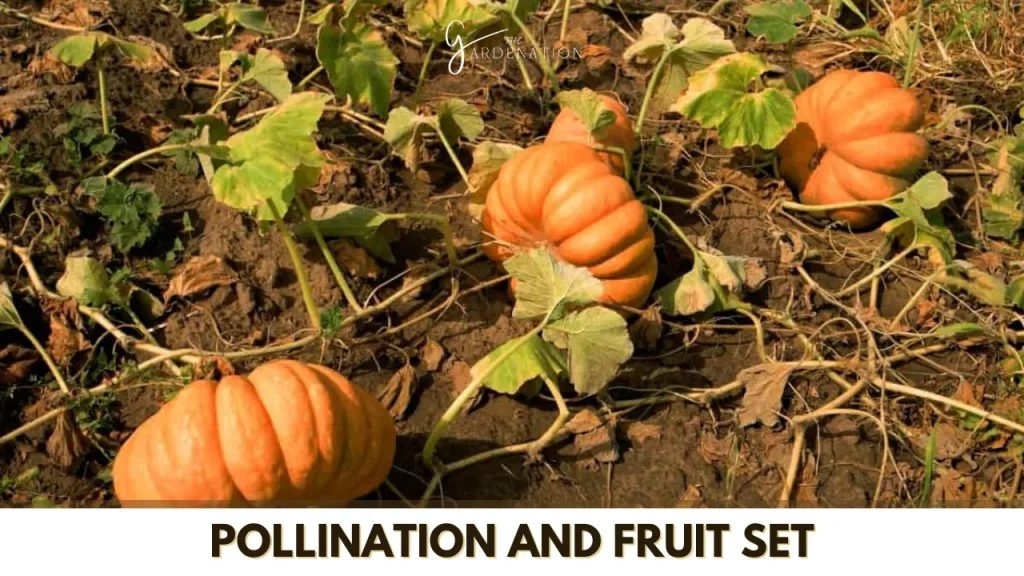
Male and female flowers are separate in pumpkin plants, it ultimately defines that this cultivar promotes cross-pollination. Presence of pollinators during a shorter flowering period is necessary. So one should encourage planting of other flowering companion plants that will attract pollinators to the garden. They will transport pollen from male to female.
Fruit set is the transition between flower to fruit.
- After the pollinators have done their task. The fertilization will begin as a result of successful pollination.
- After the maturation of fertilized ovules and falling of petals, tiny immature pumpkins are seen during the mid-summer.
- The fruit setting is also a rapid process and takes place in 1-2 weeks.
In this way vegetative and reproductive growth of the plant is completed and the plant will focus on developing its fruit.
Fruit Development
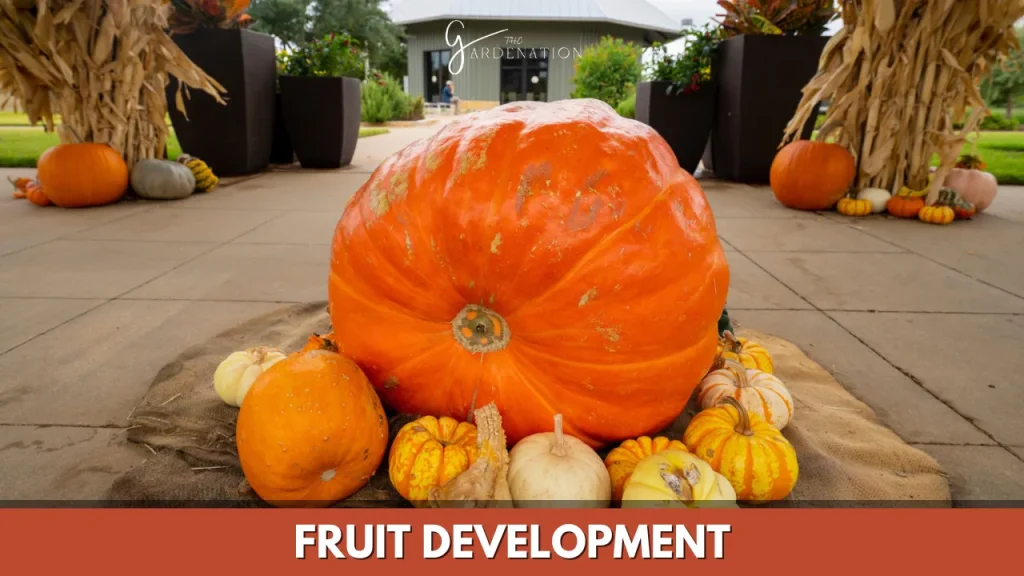
Within 45-55 days the fruit development will be completed. This phase of growth also prefers warm climate and full sun. The young pumpkins grow rapidly on the vines. During this phase fruit must be protected from pest and disease attack and proper waterings must be maintained.
The pumpkin will grow in size and develop its color and flavor. Depending on the variety it will develop its color, usually orange.
Maturation and Harvest
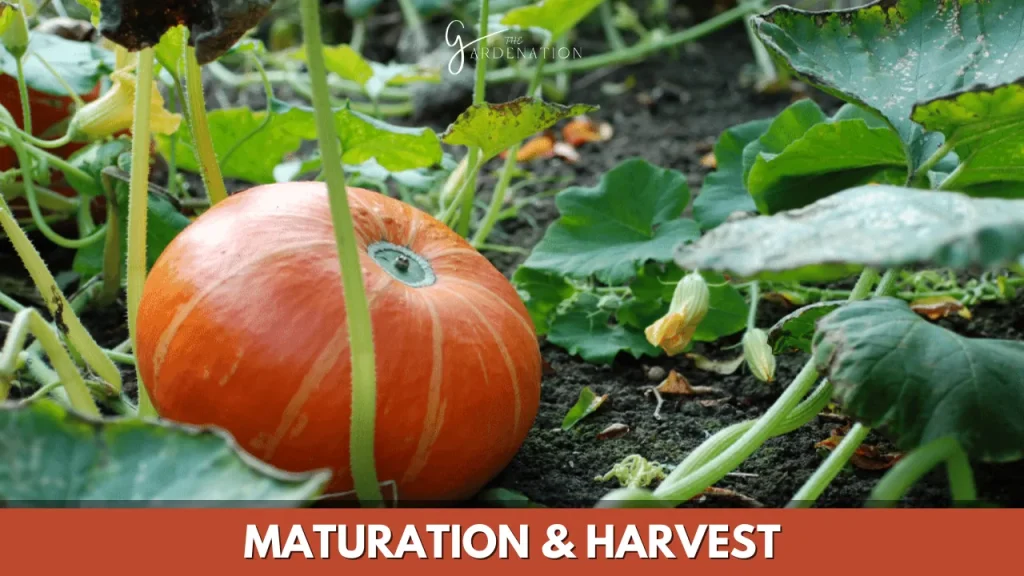
This is the final phase of the growth stage of pumpkin. The pumpkin matures to its full and the appearance of the plant will tell itself when is the time to harvest.
- Vines will begin to die back as the main focus of the plant is the maturation of fruit.
- The fruit will develop a firm color and get hard.
- The stem connecting the pumpkin and vine will lose its green color and become dry and brown.
In 100-120 days after sowing seed pumpkins are ready to harvest. Remember to reduce watering at the final stages of the plant so that the plant reaches its peak flavor and quality.
This is the overall process through which the pumpkin plant goes during its life. One must understand each process to the best extent to get the best growth of pumpkins in the garden.
Frequently Asked Questions
Are all Pumpkins Orange Colored?
The most popular and widely known appearance of pumpkins are in orange colors as we see during halloween. But yes, there are several colors and shapes of pumpkins for different varieties. Beyond orange we see green, yellow, white and even blue/gray and red colored pumpkins are grown throughout the world.
How Pumpkins Can Grow Very Large in Size?
Growing pumpkins of very large size is an interesting cultural approach.. However it has limitations. Not all pumpkins can grow to this size but few genetically modified varieties such as “Atlantic Giant” can be grown incredibly large in size with the provision of best nutritions and overcoming all challenges of the growth phase.
The world record for heaviest pumpkin is 1,321 pounds.
Conclusion
Pumpkins are widely grown all over the world for their various nutritious and cultural importance. They are grown in areas with warmer climates but 21-29℃. During their life they go through several growth stages. From seedling phase to harvesting it takes 100-120 days reaching its mature size and vibrant color.
